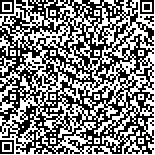| 摘要: |
| 血卵涡鞭虫是一类感染海洋甲壳类动物的寄生性甲藻。本研究通过对我国山东、浙江和广东三地的血卵涡鞭虫群体进行rDNA 基因(包括5.8S, ITS1 和ITS2)的测序和遗传分析, 研究了我国沿海养殖蟹类中血卵涡鞭虫群体的遗传多样性以及与美国和欧洲群体的亲缘关系。结果表明, 流行于我国沿海地区养殖蟹类中的血卵涡鞭虫群体存在一定的遗传多态性, 共发现14 个单倍型, 其中单倍型ST041a 在各个群体中均有出现, 且发生频率较高; 而三个地理群体之间无明显遗传差异, 侵染不同宿主(三疣梭子蟹和拟穴青蟹)的株系间也无显著遗传差异。另外, 我国的上述群体在遗传上是不同于国际上其他地区的独立分支, 属于Hematodinium perezi 基因型Ⅱ; 其亲缘关系与美国兰蟹中的株系较近(遗传距离D=0.027), 而与欧洲冷水株系稍远(D=0.236)。本研究肯定了血卵涡鞕虫是一类“泛宿主”型病原生物, 即在同一地区可侵染不同的甲壳类宿主。我国沿海地区的蟹类养殖应避免不同种类间的混养, 以及不同地区间的引种交换, 以防止血卵涡鞕虫流行病的进一步扩散。 |
| 关键词: 寄生性甲藻 甲壳动物 遗传多样性 地理分布 核糖体DNA |
| DOI:10.11693/hyhz20140800216 |
| 分类号: |
| 基金项目:国家自然科学基金青年基金项目, 41206162 号, 41206145 号; 国家海洋局第一海洋研究所基本科研业务费专项项目,0214G33 号。 |
附件 |
|
| GENETIC DIVERSITY OF PARASITIC DINOFLAGELLATE HEMATODINIUM SP. ALONG CHINESE COAST |
|
XIAO Jie1,2, ZHANG Xue-Lei1,2, LIU Rui-Juan1,2, LI Cai-Wen3
|
|
1.The First Institute of Oceanography, State Oceanic Administration, Qingdao 266061, China;2.Key Lab of Science and Engineering for Marine Ecological Environment, Qingdao 266061, China;3.Key Lab of Marine Ecology and Environmental Sciences, Institute of Oceanology, Chinese Academy of Sciences, Qingdao 266071, China
|
| Abstract: |
| Parasitic dinoflagellate Hematodinium spp. infects marine crustaceans worldwide. We studied the nucleotide sequence variations of rDNA genes (5.8S, ITS1, and ITS2) and investigated the genetic variations among Hematodinium populations from three geographic locations in China (Shandong, Zhejiang, and Guangdong) and two hosts (Portunus trituberculatus and Scylla paramamosain). We observed 14 haplotypes in total, and one haplotype (ST041a) was detected in all geographic and host populations in relatively high frequency. Further genetic analysis revealed that the genetic difference among the three geographic populations and those infecting different hosts were not significant. Furthermore, the Chinese strain was a monophyletic clade and assigned tentatively as H. perezi Genotype II. It was genetically closer to the strain infecting blue crabs in the eastern coasts of the U.S. (genetic distance D=0.027), while divergent from the European populations (D=0.236). It can be confirmed that Hematodinium spp. was a “host generalists”, which may infect various crustaceans in an epidemic region. Therefore, cautions shall be taken in aquaculture practice, such as culturing different crustacean species in the same ponds and introduction among crab stocks along the coasts of China. |
| Key words: parasitic dinoflagellate crustacean genetic variation geographic distribution ribosomal DNA |
